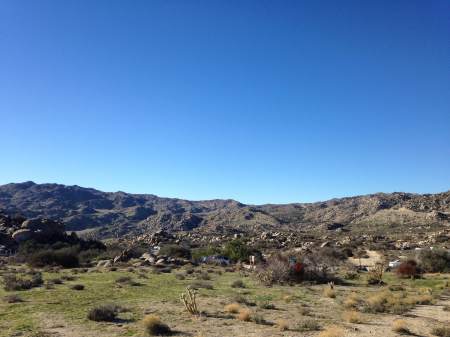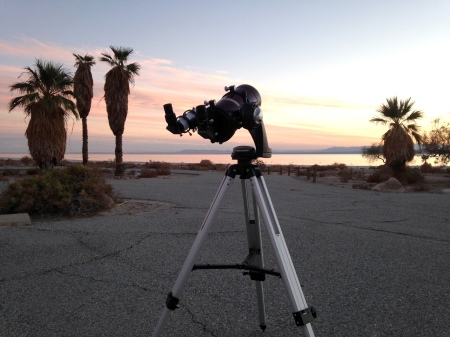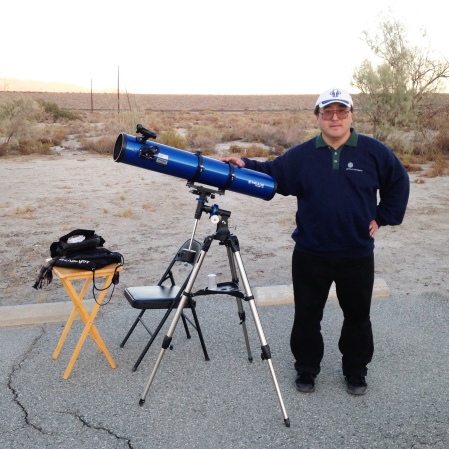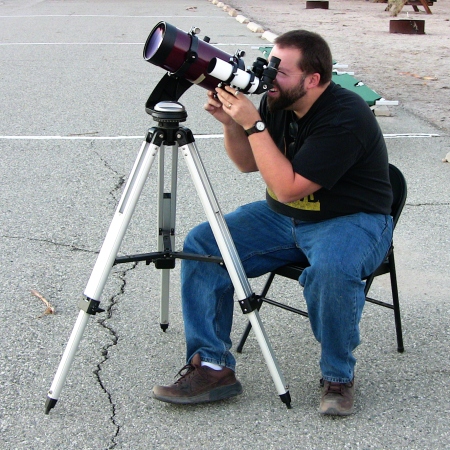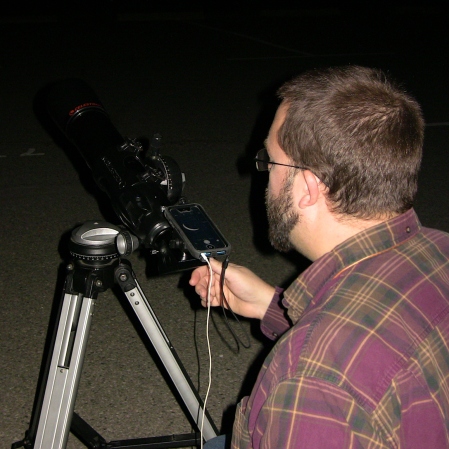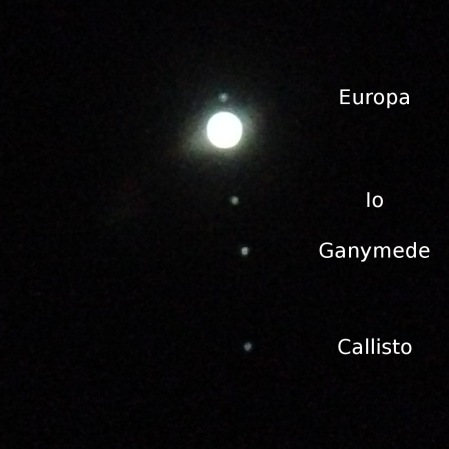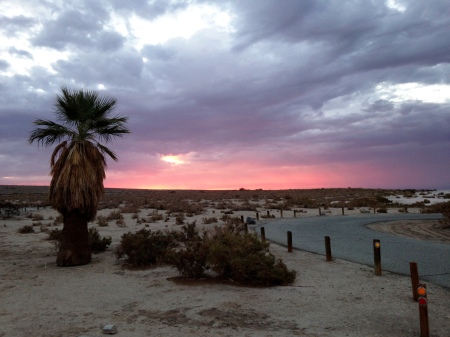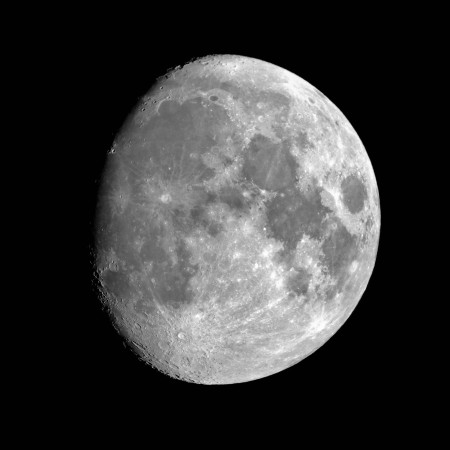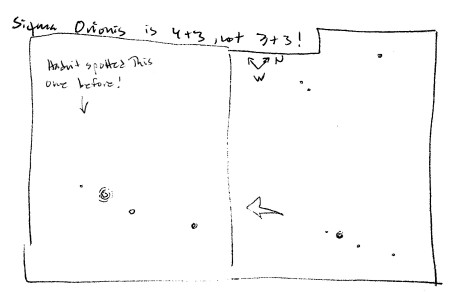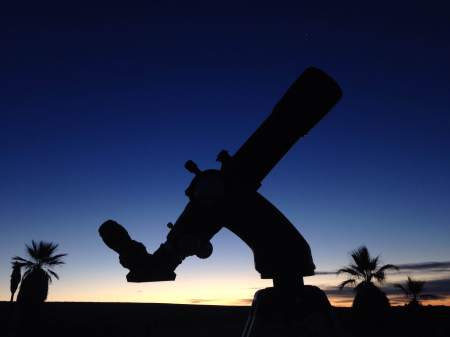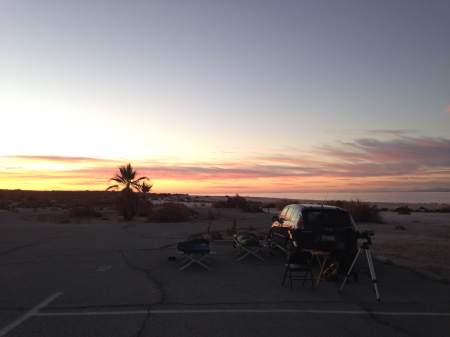
Preface – Running with the Red Queen
I’ve just finished maybe the busiest spring of my life. January and February were largely sunk into day-job work – time-consuming, but necessary, interesting, and in fact rewarding. Then the last three months have been taken up with travel and public lectures.
- In March I went to Oklahoma for 10 days of paleontological research in field and lab, and I gave a talk at the Oklahoma Museum of Natural History titled, “Dinosaurs versus whales: what is the largest animal of all time, and how do we know?”
- In April I did a two-day trip to Mesa, Arizona, for more paleo work. No talk on that trip, but I did participate in the “Beer and Bones” outreach at the Arizona Museum of Natural History.
- In early May I was in Utah for another 10 days of paleo research, and I gave a talk at the Prehistoric Museum in Price on, “Why elephants are so small”. My colleague Mike Taylor and I took one day off from dashing through museums to tour Arches National Park, which is where Mike took the photo at the top of the post.
- Last weekend I was up at RTMC, where I gave a Beginner’s Corner talk on, “The scale of the cosmos”.
I’m not complaining – far from it. It’s been exhilarating, and the collaborative work I have rolling in Oklahoma and Utah will hopefully be paying off for years. And planning and executing all of the work has been satisfying. Particularly the RTMC talk, which deserves a whole post of its own. And ultimately this is all stuff that I chose to do, and if I could do it all over again, I would.
BUT there have been consequences. Most frustratingly, I haven’t had enough uninterrupted time to get anything written up for publication – not the sizable backlog of old projects I need to get finished up, and not the immense pile of new things I’ve learned this year. I haven’t gotten out to observe as much as I’d like, and I’ve barely blogged at all.
And it’s not over. In two weeks I leave for a week of paleo fieldwork in Oklahoma, then I’m back for a week, then I’m off to Utah for about 10 more days of digging up dinosaurs. In between I’ll teaching in the summer human anatomy course at WesternU.
But I’ve had a nice little pulse of observing in the last couple of weeks – two weekends ago up at Arroyo Grande, near San Luis Obispo, last weekend at RTMC above Big Bear, and this week at Santa Cruz Island off the coast. No time for separate observing reports, so I’m combining them all into one.
Observing Report 1 (Medium): The Planets and Moon from Arroyo Grande
I was fortunate to be part of a great, tightly-knit cohort of grad students at Berkeley. Of the people I was closest to, some are still in and around the Bay Area and some of us have been sucked into the gravity well of the LA metro area. Occasionally we get together somewhere halfway in between, either up in the Sierras or near the coast. I usually take a telescope, because almost everywhere is darker than where I live, and when I’m traveling by car there’s simply no reason not to.

This year we met up for a couple of days and nights in Arroyo Grande. We hiked in the hills, went down to Morro Bay to watch ocean wildlife and buy seafood, played poker, and generally got caught up on work, family, hobbies, and life. Our first night was wonderfully clear. I had along the trusty C80ED, which has become my most-used scope. It’s mechanically rugged, optically damn near perfect, and compact enough to not require much time or thought when it comes to transportation and setup. On Saturday, May 21, we spent some time with Jupiter, Mars, and Saturn. Jupiter and Saturn were as they always are: beautiful and surprising in their immanence. I cannot look through the telescope at either of them without being forcefully reminded that they are as real as I am, that as I go about my days full of busyness and drama, they are always out there, hundreds of millions of miles away, go about their own business whether I or anyone else pay them any attention or not. One of my friends had never seen the rings of Saturn with his own eyes, so that was an added bonus.
Mars was the real treat. Using the Meade 5mm 100-degree EP and a Barlow I was able to crank up the magnification to 240x. The dark dagger of Syrtis Major and the white gleam of the north polar cap were both obvious. It is always arresting to see details on this world that has loomed so large in the human imagination, from ancient mythology to science fiction to current and future exploration.
The next night we sat out on the patio, eating oysters and watching the sun set. I didn’t have any of my own binoculars along, but a friend had brought a couple, and after it got dark we watched the still-mostly-full moon rise through the trees on the ridgeline to the east.
It was all shallow sky stuff (solar system, that is), but it was all spectacular, and I’m glad we did it.
Observing Report 2 (Large): Going Deep at RTMC
Last weekend I was up at RTMC, finally. I’ve been wanting to go since I got to SoCal, but in the past it’s fallen on the same week as our university graduation and I’ve been too wiped out. I didn’t make it up for the whole weekend. We went up as a family to stay Saturday and Sunday nights. I went up to RTMC early Sunday morning to look around, give my talk, and hang out. Ron Hoekwater, Laura Jaoui, Jim Bridgewater, Ludd Trozpek, and Alex McConahay of the PVAA were all there and we spent some time catching talks and jawing about skies and scopes. I also chatted with some folks from farther afield, including Arizona and NorCal.

I took off in the afternoon to spend time with London and Vicki, then went back up after dinner. All I had along were my Celestron 10x50s (yes, those), but Ron had his 25-inch Obsession dob, and he was content to use it as the centerpiece of a group observing session. We looked at the planets, or at least Jim Bridgewater and I did – Ron had checked them out the previous night and didn’t want to blow out his dark adaptation. That was a smart call, as the Obsession gathers a LOT of light and the planets were almost blown out. We could have put in a filter, but ehh, we had other things to be getting on with.
We started with globular clusters. M3, M5, M53, NGC 3053, and one or two other distant NGC globs. The close ones were explosions of stars that filled the eyepiece. The distant ones shimmered out of the black like the lights of distant cities. Then we moved on to galaxies. M81 and M82 were bigger, brighter, and more detailed than I had ever seen them. M51 was just stunning – the spiral arms were so well-defined that it looked like Lord Rosse’s sketch.

As nice as those were, the Virgo galaxy cluster was better. There were so many galaxies that identifying them was a pain – there were so many little NGCs in between the familiar Messier galaxies that my usual identification strategies kept getting derailed. It was kind of embarrassing, actually – I did just write an article about this stuff. But also incredible. NGC 4435 and 4438 – the pair of galaxies known as “The Eyes” – were so big, bright, and widely separated that I didn’t realize I was looking at them until the third or fourth pass.
We finished up on planetary nebulae. The seeing was good but not perfect – the central star in the Ring Nebula was visible about a quarter of the time. The Cat’s Eye, NGC 6543, was a fat green S with a prominent central star – it looked like it had been carved out of jade.
An evening under dark skies with a giant scope is both a blessing and a curse. A blessing because you get to see so many unfamiliar objects, and so many details in familiar objects, that are beyond the reach of smaller scopes. A curse because by the end of the session you may find yourself thinking, “Sheesh, why do I even bother with my little 3-, 5-, and 10-inch scopes?”
Fortunately another observing experience, one that would remind me of the joys of small-aperture observing, was right around the corner.
Observing Report 3 (Small): A Binocular Tour of the Spring Sky
My son, London, is finishing up fifth grade at Oakmont Outdoor School, one of the half-dozen or so different elementary schools in the Claremont Unified School District. We were fortunate when we moved to Claremont to land just a couple of blocks from Oakmont – we would have been happy to land within walking distance of any of the schools, but if we’d had our choice we would have picked Oakmont anyway, since we wanted to raise London with as much exposure to the outdoors as we could.
Oakmont’s slogan is, “Learning in the world’s biomes”. The major activities of each grade are organized around a particular biome, and so is the end-of-year field trip. In third grade, the kids went to Sea World. Last year it was the desert by Palm Springs for a 2-day, 1-night trip. This year it was Santa Cruz Island, in Channel Islands National Park, for a 3-day, 2-night trip. Parent chaperones are needed and I’ve been fortunate to get to go every year.

The island was amazing. We saw dolphins, sea lions, and petrels on the boat ride out – I took the photo above from the prow of the ship – more sea lions, seals, pelicans, cormorants, gulls, and red pelagic crabs at the shore, and dwarf island foxes, ravens, and the occasional hawk inland. On the final evening, June 2, we hiked up to the top of the cliffs to watch the sun set over the Pacific, which was one of the most beautiful things I have ever seen in my life. I didn’t know it at the time, but I’d see something even more beautiful just a few hours later.
I had binoculars along – Bushnell 10×40 roofs that I got specifically for daytime use, and which I had used a lot on the trip already to watch wildlife. When we got back to camp, a few of the teachers and hung back and started talking about the planets, bright stars, and constellations. I started pointing out a few of the brighter targets and passing around the binoculars, and we ended up having an impromptu binocular star party. (The kids and a fair number of the adults were all exhausted from a full day of hiking, and sensibly went to bed.)
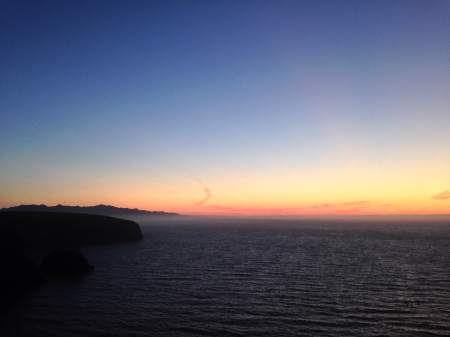
What followed was one of the best and most memorable observing sessions of my life. The only permanent residents of Santa Cruz Island are a couple of National Park employees, and they turn their lights off after dark. We got a little light pollution on the eastern horizon from Ventura and Oxnard, some 20 miles distant, but for the most part the sky was dark. Afton Canyon dark, Hovatter Road dark – what I typically refer to as stupid dark.
We roamed all over the sky, looking at targets large and small, near and far, bright and dim. I didn’t keep track as we were going, but I wrote down a list yesterday morning on the boat ride back to the mainland (we went through a fog bank and only saw a handful of dolphins, so I had plenty of time).
In the northern sky:
In the western sky:
- M44, the Beehive – easily visible to the naked eye, and just stunning in the binos
- Leo
- Coma Berenices star cluster
- Virgo/Coma galaxies – identifications were tough, but a few were visible
In the eastern sky, Lyra had just cleared the trees when we started observing (at 9:15 or so), and all of Cygnus was above the trees when we finally shut down at 12:45 AM. In addition to tracing out the constellations, along the way we looked at:
- Epsilon Lyrae, the Double-Double star
- Albireo
- Alpha Vulpeculae (the subject of my Binocular Highlight column in the ### issue of Sky & Telescope)
- Brocchi’s Coathanger (Collinder 399)
- Sagitta (just traced the constellation)
- M27, the Dumbbell Nebula
- Sadr and its surrounding ring of stars in the heart of Cygnus
- NGC 7000, the North American Nebula – this and the Northern Coalsack were easily visible to the naked eye once Cygnus has risen out of the near-horizon LP
…and we just cruised the Milky Way from Cygnus to Cepheus, not singling out individual objects but just taking in the rich star fields.
But the southern sky was the best. Looking south from Santa Cruz Island, there’s only open ocean, broken here and there by other, distant islands and ultimately by Antarctica. It reminded me of looking south from Punta del Este in Uruguay, only I was in a valley instead of on a beach. The ridgeline to the south did cut off a bit of the sky, but we were still able to see all of Scorpio, including the False Comet, made up of NGC 6231 and Trumpler 24, which was one of the highlights.
It was trippy watching the Milky Way rise. I usually look at the summer Milky Way when it is higher overhead. I usually have to do that, because the objects aren’t visible in the near-horizon haze. But from Santa Cruz Island, things were not only bright but obvious as soon as they cleared the ridgeline to the south. It’s almost pointless to list them – we saw every Messier object in the “steam from the teapot”, from M7 and M6 in the south to M11 in the north, plus a lot of NGCs, plus star clouds and dark nebulae almost beyond counting. They were all great through the binoculars – M7 was a special treat, like a globular cluster on a diet – but honestly the best views of the night were naked-eye.
I realized that I am just never out observing the Milky Way at this time of year. My regular desert observing spots are all too hot in the summer, and when I do go there is often at least some light pollution to the south (El Centro from the Salton Sea, Barstow from Owl Canyon, etc.). I do most of my deep and dark observing in October and November, when the southern Milky Way is setting, not rising.
So I was completely unprepared for how much detail would be visible to the naked eye. When the Milky Way rose, it didn’t look like a band of light, it looked like a galaxy. I searched through a lot of photographs of the rising Milky Way to find one that approximated the naked-eye view, and this is the closest I got:
I am not exaggerating – the bright and dark areas were that defined. The Great Rift was visible from Cygnus to the horizon, and its southern border was notched by distinct deep sky objects from Aquila onward. The Scutum Star Cloud, M16, M17, M24, M23, M8, M6, M7, NGC 6281, and the False Comet were all easily visible to the naked eye as a chain of luminous patches against the dark dust lane of our own galaxy. In fact, I noted NGC 6281 with my naked eyes first, thought, “What the heck is that?”, and had to look it up. We also caught M4, M22, M23, and M25 in the bins, plus a bundle of dark nebulae that I’d never noted before and didn’t bother keeping track of.
Longtime S&T contributor Tony Flanders (now retired but still writing occasionally) is active on Cloudy Nights, and his sig file reads:
First and foremost observing love: naked eye.
Second, binoculars.
Last but not least, telescopes.
And I sometimes dabble with cameras.
Until fairly recently I would have listed my own preferences in reverse order, from telescopes to binos to naked eye. That may sound odd for a “bino guy”, which I guess I am since all of my ‘professional’ astro-writing has been binocular-based. But it’s true – as much as I love binoculars, I would have picked a telescope first. But I am – gradually, belatedly – waking up. In some ways, it would have been great to have a scope, any scope, along on the island trip. I’m sure that even the C80ED would have taken us crazy deep, considering what we could see with a pair of low-end 40mm roof-prism bins. But it would also have come between us and the sky, and I would have spent more time futzing with eyepieces and less time just looking up.
This was a surprising and welcome realization, coming so shortly on the heels of a frankly astonishing session with Ron’s 25-inch dob at RTMC. I was worried that big-telescope observing might spoil me, but that fear turned out to be unfounded. All I need to be happy is a dark sky. If I have some people to share it with, even better. Anything more is just cake at the end of an already long buffet.
Let’s eat.


















